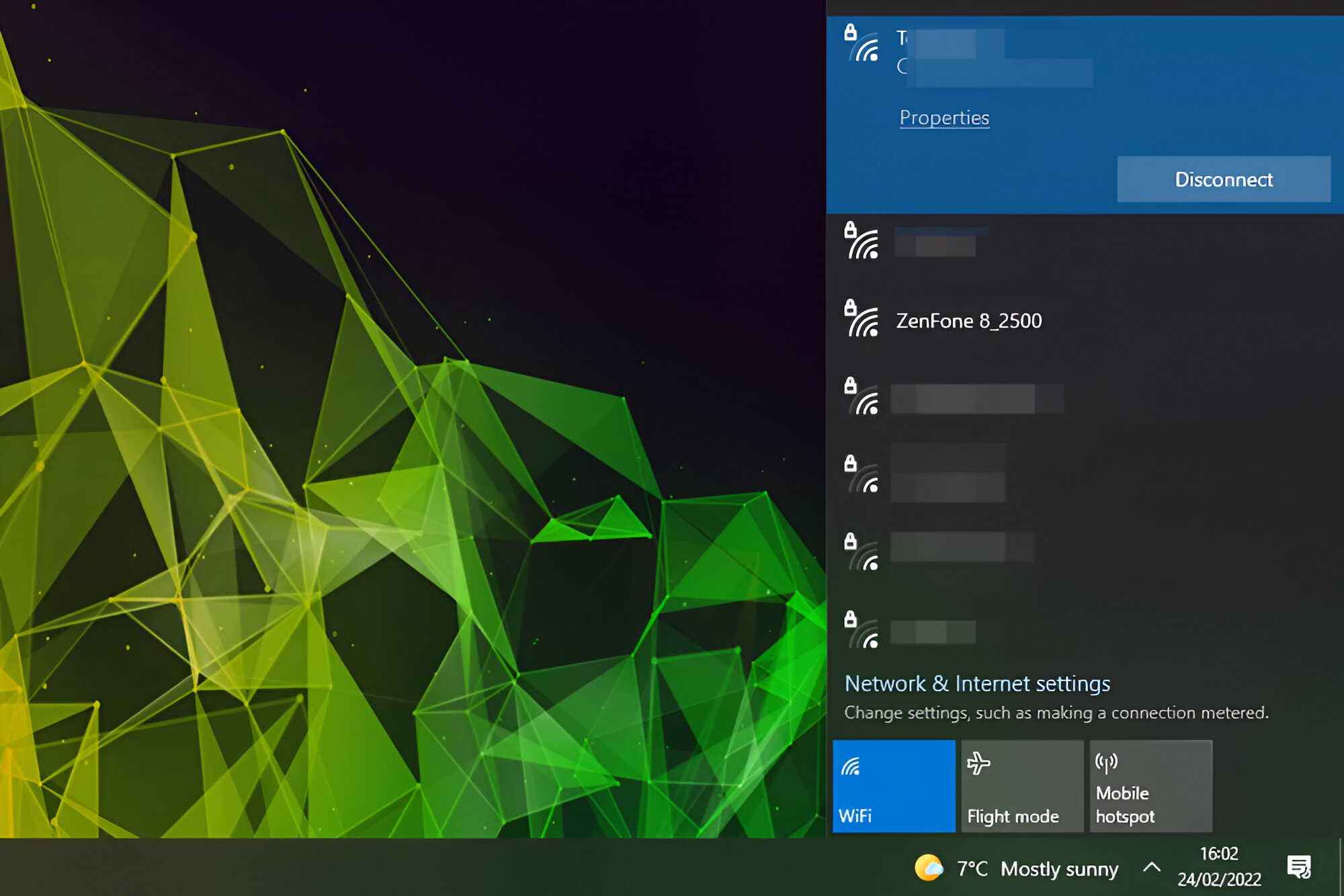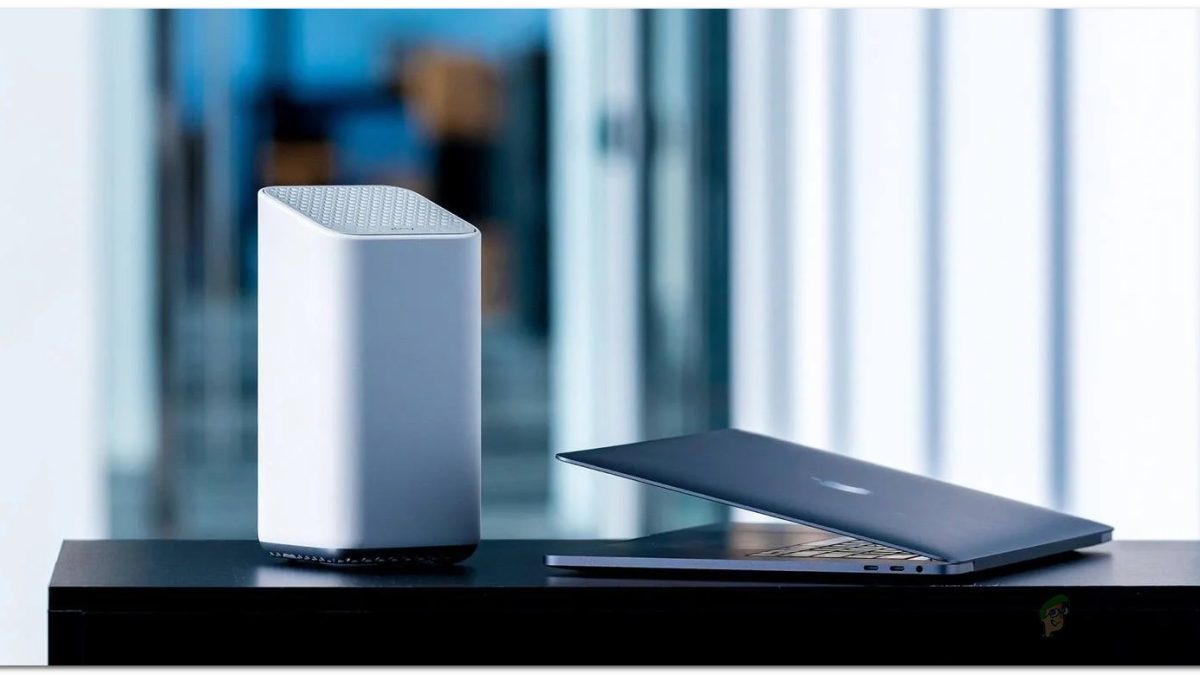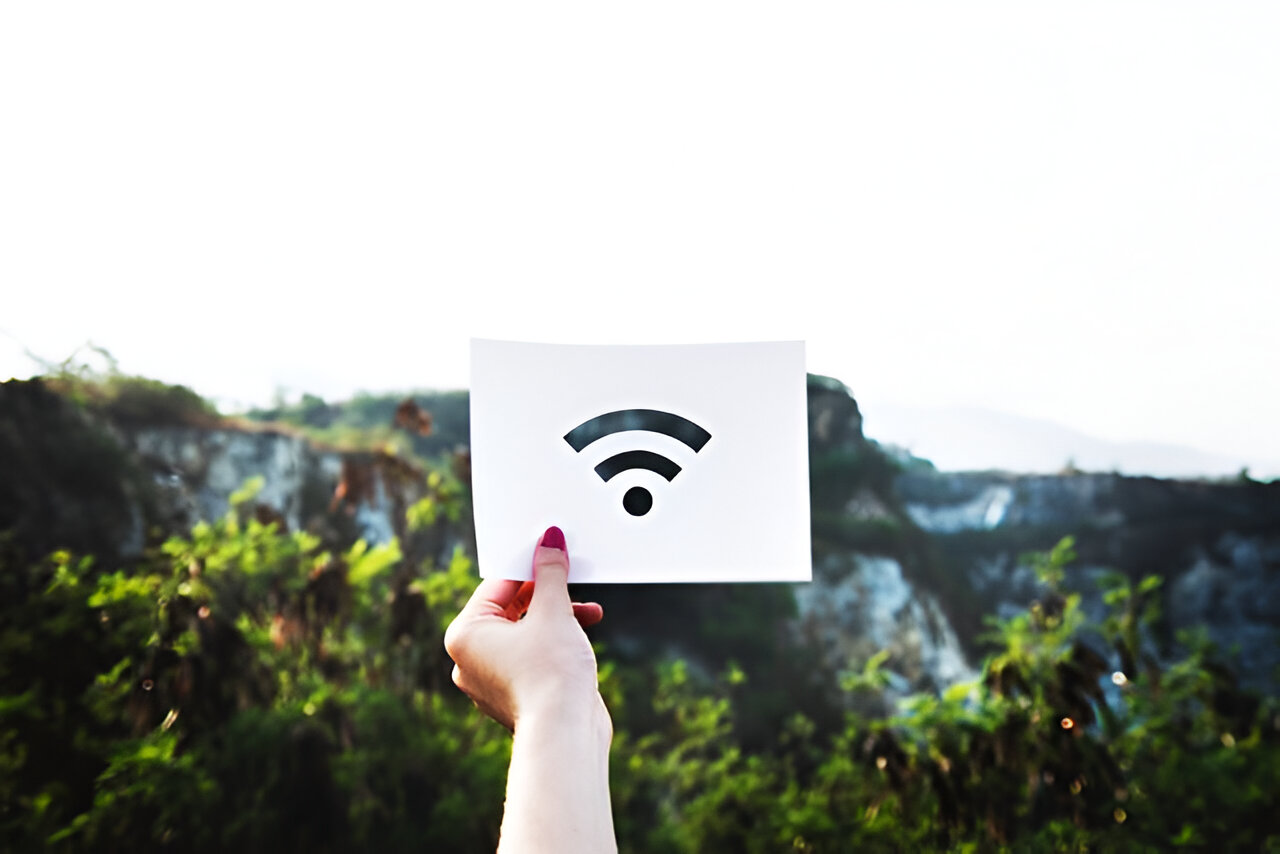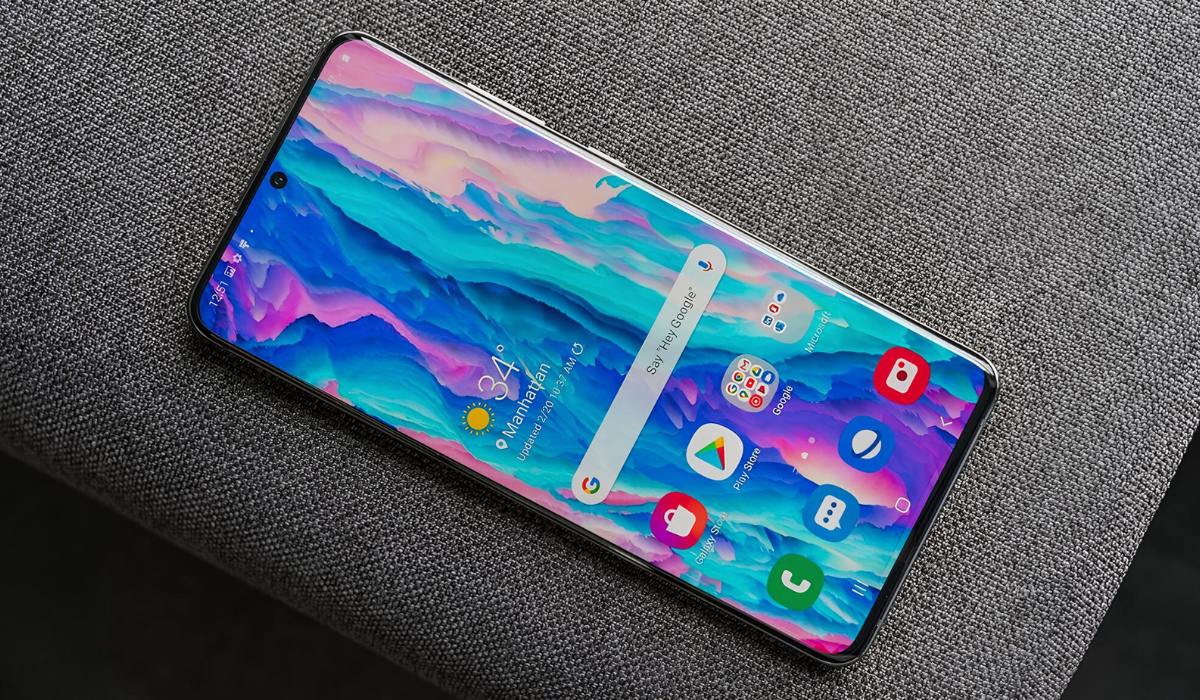Introduction
Connecting your laptop to a hotspot is a convenient way to access the internet when you're on the move or when traditional Wi-Fi networks are unavailable. Whether you're traveling, working remotely, or simply need a backup internet connection, using your smartphone as a hotspot can provide the connectivity you need. In this guide, we'll walk you through the user-friendly steps to connect your laptop to a hotspot, allowing you to stay connected and productive wherever you go.
By leveraging your smartphone's hotspot feature, you can create a portable Wi-Fi network that your laptop can connect to. This means you can access the internet using your smartphone's cellular data, turning it into a reliable and secure internet source for your laptop. This setup is especially useful in situations where public Wi-Fi networks are unreliable or when you need a private and secure connection for sensitive tasks.
As we delve into the step-by-step process, you'll discover how straightforward it is to establish a connection between your laptop and your smartphone's hotspot. With just a few simple actions, you can harness the power of your smartphone's data plan to provide internet access to your laptop, eliminating the need for traditional Wi-Fi networks in certain scenarios.
Whether you're a digital nomad, a remote worker, or a casual user seeking a backup internet solution, understanding how to connect your laptop to a hotspot empowers you to stay connected in various situations. By following the user-friendly steps outlined in this guide, you'll be well-equipped to establish a reliable internet connection for your laptop using your smartphone's hotspot functionality. So, let's dive into the process and ensure that you're equipped with the knowledge to seamlessly connect your laptop to a hotspot whenever the need arises.
Step 1: Turn on the Hotspot on Your Smartphone
To initiate the process of connecting your laptop to a hotspot, the first step involves activating the hotspot feature on your smartphone. This functionality allows your smartphone to act as a portable Wi-Fi hotspot, enabling other devices, such as your laptop, to connect to it and access the internet using the cellular data network. Follow these user-friendly steps to turn on the hotspot on your smartphone:
-
Access the Settings Menu: Begin by unlocking your smartphone and accessing the settings menu. The location of the settings may vary depending on the device, but it is typically represented by a gear or cogwheel icon. Once in the settings menu, look for the "Network & Internet" or "Connections" option, where you can find the hotspot feature.
-
Locate the Hotspot/Tethering Option: Within the network settings, you should find the "Hotspot" or "Tethering" option. This is where you can enable the hotspot functionality on your smartphone. Tap on this option to proceed to the hotspot settings.
-
Enable the Hotspot: Upon accessing the hotspot settings, you will encounter a toggle switch or a button that allows you to turn on the hotspot. By activating this feature, your smartphone will begin broadcasting a Wi-Fi network that other devices can connect to.
-
Customize Hotspot Settings (Optional): Depending on your smartphone model and operating system, you may have the option to customize the hotspot settings. This can include setting a network name (SSID) and password for your hotspot, configuring the security type, and managing connected devices. While these settings are optional, they can enhance the security and manageability of your hotspot network.
By following these straightforward steps, you can easily activate the hotspot feature on your smartphone, transforming it into a portable Wi-Fi hotspot that your laptop can connect to. With the hotspot turned on, you are now ready to proceed to the next step and enable Wi-Fi on your laptop to establish the connection between the two devices.
Step 2: Enable Wi-Fi on Your Laptop
Once the hotspot feature is activated on your smartphone, the next step is to enable Wi-Fi on your laptop to establish a connection with the hotspot network. Enabling Wi-Fi on your laptop allows it to scan for available wireless networks, including the hotspot being broadcast by your smartphone. Follow these user-friendly steps to enable Wi-Fi on your laptop:
-
Access Wi-Fi Settings: Locate the Wi-Fi icon in the system tray or menu bar of your laptop's operating system. It is typically represented by a series of curved lines or a fan-shaped icon. Click on this icon to access the Wi-Fi settings.
-
Turn On Wi-Fi: In the Wi-Fi settings menu, you will find an option to enable Wi-Fi connectivity. This may be presented as a toggle switch or a simple button that allows you to turn on Wi-Fi functionality on your laptop. Click on this option to activate Wi-Fi.
-
Scan for Available Networks: Once Wi-Fi is enabled, your laptop will begin scanning for available wireless networks in the vicinity. This process may take a few moments, during which your laptop will detect the hotspot network being broadcast by your smartphone.
-
Select the Hotspot Network: After the scan is complete, your laptop will display a list of available wireless networks, including the hotspot network from your smartphone. Look for the network name (SSID) that corresponds to your smartphone's hotspot and click on it to initiate the connection process.
-
Connect to the Hotspot: Upon selecting the hotspot network, your laptop may prompt you to enter the hotspot password, if security is enabled. Enter the password and click "Connect" to establish the connection between your laptop and the hotspot.
By following these straightforward steps, you can seamlessly enable Wi-Fi on your laptop and connect it to the hotspot network being broadcast by your smartphone. Once the connection is established, your laptop will be able to access the internet using the cellular data from your smartphone, providing you with a reliable and portable internet solution. With Wi-Fi enabled on your laptop and connected to the hotspot, you are now ready to proceed to the next step and enter the hotspot password to finalize the connection process.
Step 3: Connect to the Hotspot Network
After enabling Wi-Fi on your laptop, the next crucial step is to connect it to the hotspot network being broadcast by your smartphone. This process allows your laptop to establish a direct link with the smartphone's hotspot, enabling seamless access to the internet using the cellular data network. Follow these user-friendly steps to connect your laptop to the hotspot network:
-
Locate the Wi-Fi Network Icon: Once Wi-Fi is enabled on your laptop, locate the Wi-Fi network icon in the system tray or menu bar of your operating system. It typically appears as a series of curved lines or a fan-shaped icon, representing wireless connectivity.
-
View Available Networks: Click on the Wi-Fi network icon to view the list of available wireless networks in the vicinity. Your smartphone's hotspot network, identified by its network name (SSID), should be visible in the list of available networks.
-
Select the Hotspot Network: From the list of available networks, click on the network name (SSID) that corresponds to your smartphone's hotspot. This action initiates the connection process between your laptop and the hotspot.
-
Enter the Hotspot Password: If security is enabled on the hotspot, your laptop may prompt you to enter the hotspot password. This password is essential for establishing a secure connection to the hotspot network. Enter the password provided by the smartphone's hotspot settings.
-
Initiate the Connection: After entering the hotspot password, click on the "Connect" button to initiate the connection process. Your laptop will attempt to establish a connection to the smartphone's hotspot network using the provided password.
-
Connection Confirmation: Upon successful authentication, your laptop will display a confirmation message indicating that it has connected to the hotspot network. This confirmation signifies that your laptop is now linked to the smartphone's hotspot and can access the internet using the cellular data network.
By following these straightforward steps, you can seamlessly connect your laptop to the hotspot network being broadcast by your smartphone. Once the connection is established, your laptop gains access to the internet through the smartphone's cellular data, providing a reliable and portable internet solution. With your laptop successfully connected to the hotspot network, you are now ready to proceed with the final step of entering the hotspot password to finalize the connection process.
Step 4: Enter the Hotspot Password
Upon selecting the hotspot network and initiating the connection process, your laptop may prompt you to enter the hotspot password. The hotspot password acts as a security measure, ensuring that only authorized devices can connect to the hotspot network. This crucial step helps maintain the integrity and privacy of the hotspot, safeguarding the data being transmitted over the cellular network.
When prompted to enter the hotspot password, carefully input the password provided by the smartphone's hotspot settings. It's essential to accurately enter the password to ensure a successful and secure connection. Pay close attention to uppercase and lowercase letters, special characters, and numerical digits within the password, as these details must be entered precisely to authenticate the connection.
The hotspot password, also known as the pre-shared key (PSK) or network security key, serves as a form of authentication, allowing your laptop to securely join the smartphone's hotspot network. By entering the correct password, you demonstrate that you are an authorized user and gain access to the internet provided by the smartphone's cellular data network.
As you input the hotspot password, your laptop will process the authentication request and attempt to establish a secure connection to the hotspot network. During this process, it's important to exercise patience and ensure that the correct password is entered without errors. Once the password is successfully authenticated, your laptop will finalize the connection to the smartphone's hotspot network, enabling seamless access to the internet.
Entering the hotspot password is a critical step in the process of connecting your laptop to the hotspot. It not only facilitates a secure and encrypted connection but also ensures that the data transmitted between your laptop and the smartphone's hotspot remains protected. With the hotspot password accurately entered, your laptop is now fully connected to the smartphone's hotspot network, ready to leverage the cellular data for internet access.
By meticulously entering the hotspot password as prompted, you establish a secure and reliable connection between your laptop and the smartphone's hotspot network, paving the way for uninterrupted internet connectivity wherever you go.
Step 5: Enjoy Your Internet Connection
With your laptop successfully connected to the smartphone's hotspot network, you are now poised to enjoy seamless internet connectivity wherever you are. Whether you're working on important tasks, staying connected with friends and family, or simply browsing the web, the reliable internet connection provided by the hotspot empowers you to stay productive and engaged.
As you revel in the convenience of your newfound internet connection, it's important to leverage it effectively for your various online activities. From checking emails and accessing cloud-based documents to streaming media and participating in virtual meetings, your laptop's connectivity to the smartphone's hotspot opens up a world of possibilities.
The portability of the hotspot-enabled internet connection allows you to work from diverse locations, whether it's a bustling coffee shop, a serene park, or the comfort of your own home. This flexibility ensures that you can remain connected and productive, regardless of your surroundings.
Moreover, the secure nature of the hotspot connection provides peace of mind, especially when handling sensitive or confidential information. By utilizing the smartphone's cellular data network, you can mitigate the risks associated with public Wi-Fi networks and enjoy a private and secure internet experience.
As you navigate the digital landscape with your laptop connected to the hotspot, take advantage of the robust internet access to accomplish your tasks efficiently and stay connected with the online world. Whether it's researching, collaborating, or simply staying informed, the internet connection facilitated by the smartphone's hotspot empowers you to make the most of your digital endeavors.
In essence, the successful connection between your laptop and the smartphone's hotspot network signifies the seamless integration of portable internet connectivity into your daily routine. Embrace the freedom and reliability that the hotspot-enabled internet connection offers, and make the most of your online experiences with the convenience of connectivity at your fingertips.

























